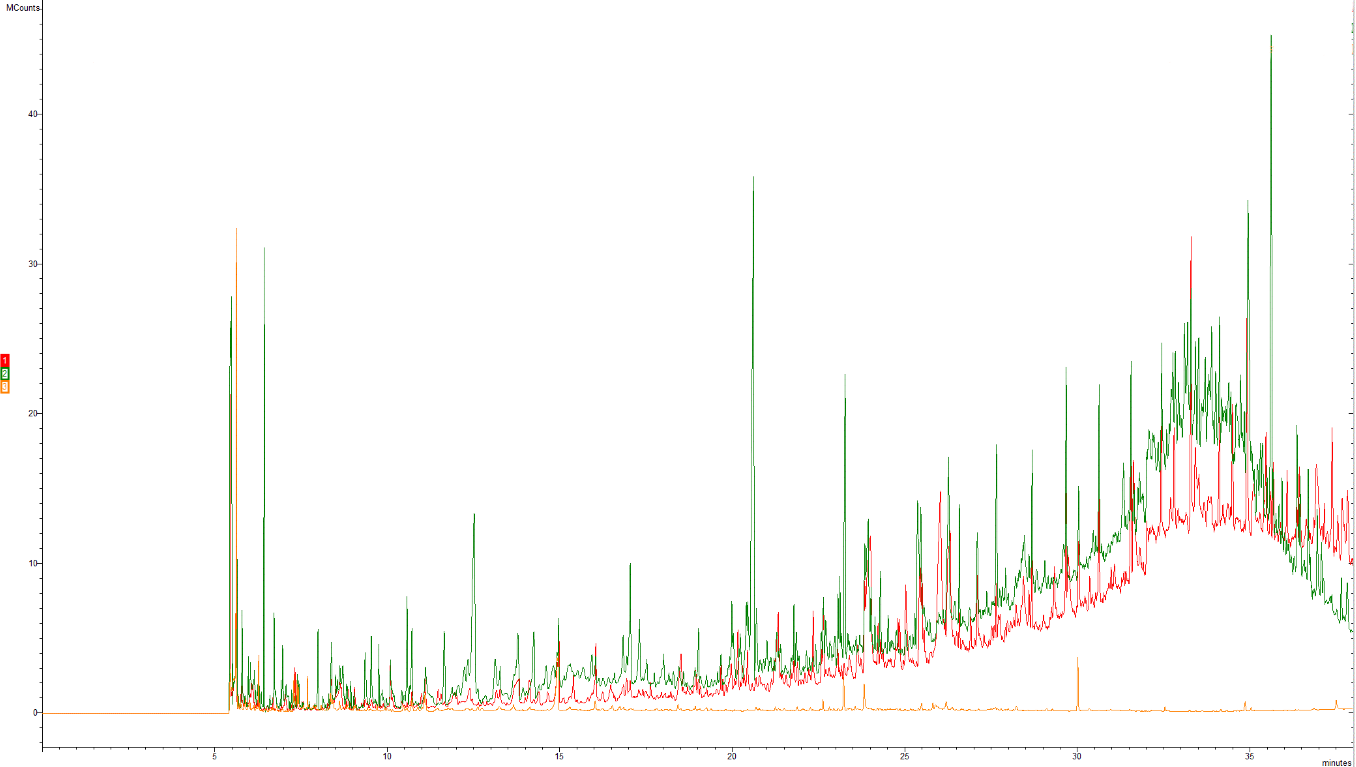A new method for high-resolution analysis of organic content in bentonite clays
In this analysis, tailored extraction methods are used to extract the organic content without the need for a drying step. The extraction methods are also designed to induce swelling of the clay to improve extraction efficiency. The clay extracts are concentrated and in combination with the superior detection limits achieved with our new mass spectrometer, very low detection limits are obtained.
The instrument in use for analysis is the most sensitive ion-trap available in combination with a very robust gas chromatograph capable of large volume injections. The main advantage with an ion-trap mass spectrometer is that it is possible to scan the full mass spectra range from 35-450 atomic mass units in one run without any loss of sensitivity. More common mass spectrometers such as quadropoles gives the maximum sensitivity when measuring on one single, pre-defined mass only. A full scan is needed to identify unknown compounds since the full mass spectra is used when searching the mass library containing the spectra of more than 400 000 individual compounds. This is where the ion-trap detector is superior over other commercially available detectors for mass spectroscopy.
The required separations of carbon compounds are achieved with an analytical column optimized for maximum resolution for organic carbon samples. Resolution is further enhanced by the use of chromatographic deconvolution using AMDIS software. This process extracts the individual mass spectra also from partially overlapping peaks in the chromatogram giving us the possibility to identify several thousand individual compounds in one single analysis.
After identification of the individual substances it is possible to continue with quantification. This can be made component by component but it is also possible to quantitate the total organic content.
You are welcome to contact us for analysis of bentonite samples!

Chromatogram from extracts of bentonite clays. Photo: Micans
